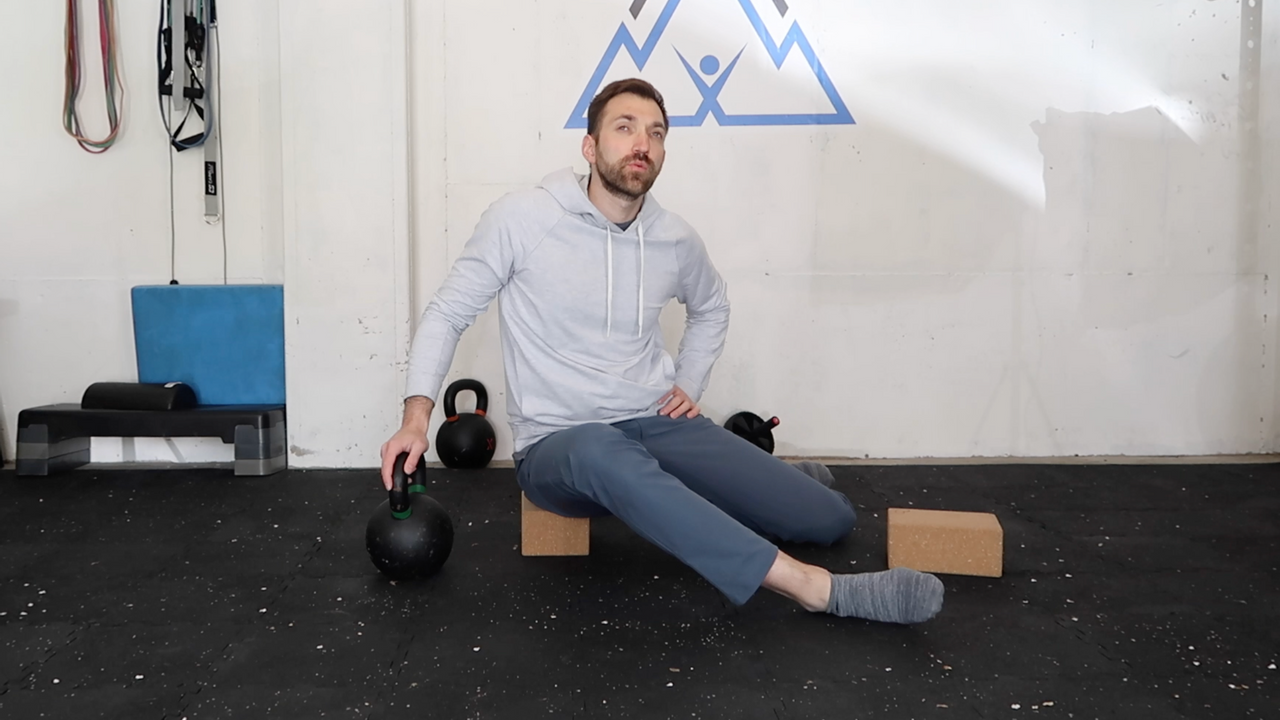A Hip Internal Rotation Stretch That Actually Works
Apr 27, 2021
If you’re looking for an effective internal hip rotation stretch, you may be surprised that it’s not so easy to find. I’ve personally found that hip internal rotation is one of the most difficult movements to improve.
I don’t think this is because the movement itself is all that different from other foundational hip movements. Instead, it seems that limited hip internal rotation is a very common issue for many individuals.
I don’t have a helpful explanation for why this is but my best guess is that most of our present daily life does not require much hip internal rotation. Most humans living in developed nations don’t do much full range squatting or sitting in a 90/90 position in their day-to-day lives.
I work with many individuals who suffer from chronic hip pain. 4 out of 5 of them will have a significant limitation in their capacity to internally rotate their femurs. Once we start improving their internal rotation, they already start getting significant relief.
So how do we go about improving hip internal rotation? In this article, I’ll provide you with two exercises that I found most effective in helping people regain hip internal rotation. In addition, I'll share my philosophy on why I think these exercises can help you. Hopefully, this information will allow you to make improvements in this stubborn movement pattern.
Does stretching improve hip internal rotation?
Yes and no. There is no one way to improve hip internal rotation. Everybody will respond to strategies differently and I would be suspicious of any resource that claims there is only one way to improve a movement pattern.
With this disclaimer, let’s talk about stretching. Stretching is such a loaded word that it has a different meaning for anyone reading or hearing it. For many, it’s something they equate with a warm up before activity. For others, it’s some dangerous thing that causes injuries. While some believe it’s the cure for every ailment in mankind. So which is it?
In my opinion, it depends. For beginners in mobility and corrective exercise training, I would not start with stretching. Effective stretching is difficult. One needs to have exceptional body awareness to understand all the different variables in a stretch: which muscle shortens, which muscle lengthens, how long to hold, how deep to go, etc.
So if beginners should not start with stretching, how does one start improving hip internal rotation? Let’s talk about isolated strengthening.
Isolated Strengthening to Improve Hip Internal Rotation.
Isolated strengthening is a great way for beginners to start learning a movement pattern. In isolated strengthening, we’re activating (and shortening) the muscles mainly responsible for the movement we’re trying to improve.
Unlike stretching, there is much less that can go wrong in isolated strengthening because there are much less variables for us to control. All we want to do is activate the main muscle group(s) responsible for the movement we’re working on.
For hip internal rotation, the main movers are the lateral hip muscles - the glute medius, glute minimus and TFL. So to start improving hip internal rotation, we must start strengthening this muscle group in internal rotation. Enter the Reverse Clamshell:
The Internal Hip Rotation Stretch - Beginner 90/90.
The most important aspect of any stretch is scaling it down to your current level of flexibility. It does not matter what everyone else in your yoga class does. It equally does not matter what your favorite instagram fitness guru can do.
The only way for YOU to get value out of any stretch is to work within your current level of flexibility. In fact, you want to set up most stretches at what I call a “safe zone,” which is a position where you’re at about 70% of your maximum range of motion.
This way, you can fight for more range while you’re in the stretch and then go back to your “safe zone” when needed. We’re not only challenging our muscles to stretch but we’re also challenging our nervous system. Going too hard for too long and too frequently will overload the nervous system and have the opposite effect you’re looking for.
So let’s see how these principles apply in the Beginner 90/90 stretch:
Programming.
If you’re a complete beginner and are aware that you have extremely limited hip internal rotation, I’d recommend you start with the Reverse Clamshell. After a couple months or more, I’d recommend you start exploring the Beginner 90/90 Stretch. Here is some helpful programming guidance:

Many clients ask me how long they’ll be doing a certain exercise when I provide them with a training plan. The answer is always the same. As long as it takes. If you’re getting value from an exercise and notice your internal rotation improving (through testing) then I would continue using that exercise.
Closing Thoughts.
There are many reasons why one would want to improve hip internal rotation - hip pain, hip discomfort, performance or movement goals. Whatever your reasons are, it’s important to understand that this movement pattern takes time to improve.
But what I can tell you is that you’ll learn a ton about your body from exploring this movement pattern. Once you can slay this stubborn beast, all other movements seem much less intimidating to conquer.
The biggest mistakes I see people make is giving up too soon or performing the exercises the wrong way. As long as you’re performing the right exercises the right way, all you can do is be patient and trust your body to open up.

